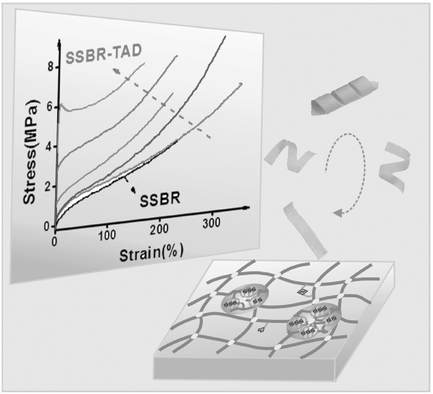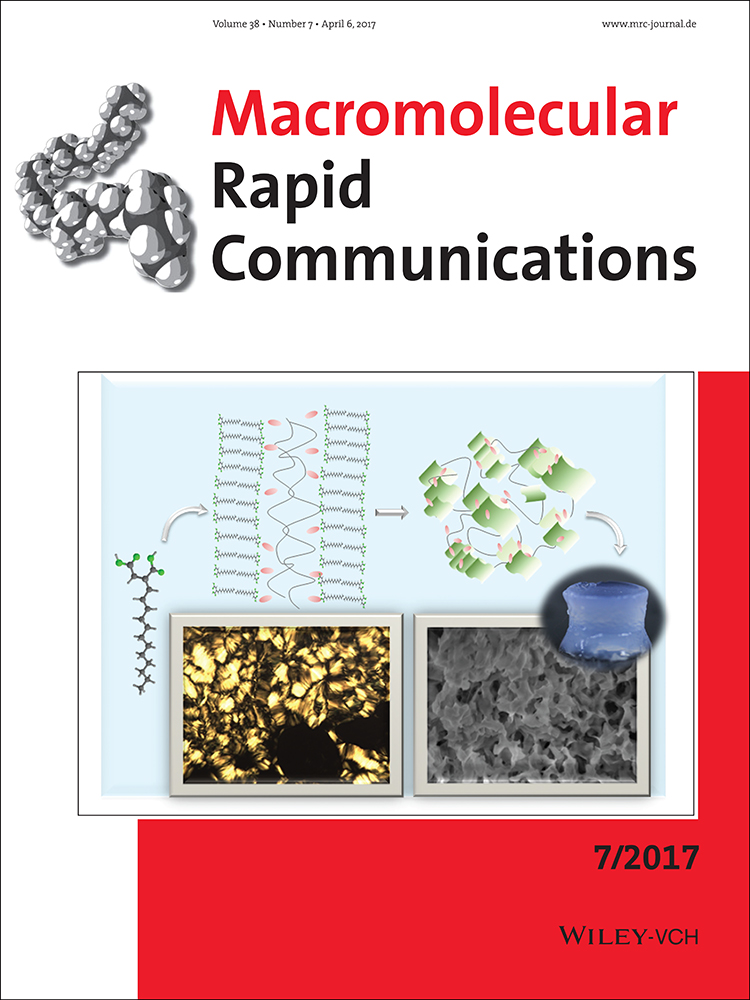Bioinspired Design of a Robust Elastomer with Adaptive Recovery via Triazolinedione Click Chemistry
Abstract
It is a significant but challenging task to simultaneously reinforce and functionalize diene rubbers. Inspired by “sacrificial bonds”, the authors engineer sacrificial hydrogen bonds formed by pendent urazole groups in crosslinked solution-polymerized styrene butadiene rubber (SSBR) via triazolinedione click chemistry. This post-crosslinking modification reveals the effects of the sacrificial bonds based on a consistent covalent network. The “cage effect” of the pre-crosslinked network facilitates the heterogeneous distribution of urazole groups, leading to the formation of hydrogen-bonded multiplets. These multiplets further aggregate into clusters with vicinal trapped polymer segments that form microphase separation from the SSBR matrix with a low content of urazole groups. The clusters based on hydrogen bonds, serving as sacrificial bonds, promote energy dissipation, significantly improving the mechanical properties of the modified SSBR, and enable an additional wide transition temperature region above room temperature, which endows the modified SSBR with promising triple-shape memory behavior.





